
views
Dietary Solutions
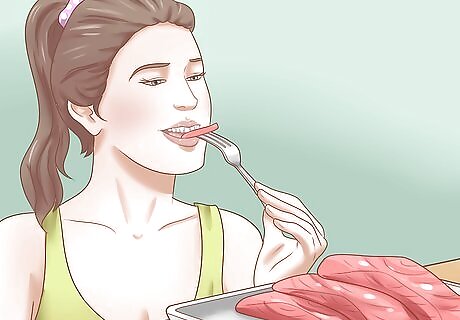
Increase your intake of healthy fats. Healthy fats, like omega-3 fatty acid and alpha-linolenic acid, can help reduce the inflammation responsible for elevated CRP levels. Get more alpha-linolenic acid by consuming seeds, nuts, and unprocessed vegetable oils. Cook with naturally pressed olive oil or canola oil. Consider snacking on walnuts in between meals and adding flaxseed to your diet. Consume types of fish that are high in omega-3 fatty acids. Salmon, trout, and sardines are good choices. Try to eat fish like this three times each week.

Eat more fruits and vegetables. Like healthy fats, most fruits and vegetables are rich in vitamins and other nutrients that have an anti-inflammatory effect on the body. Fruits and vegetables contain polyphenol. a type of antioxidant that can help improve your overall cardiovascular health. Maximize the health benefits you receive from fresh produce by leaving the skins on. The skins of most fruits and vegetables contain more dietary fiber than the flesh, and fiber can also help lower CRP.

Consume more dietary fiber. People who consume fiber-rich diets are approximately 63 percent less likely to have elevated CRP levels than those who consume inadequate amounts of fiber. If you aren't able to get more fiber into your diet naturally, try adding 1 tsp (5 ml) of psyllium, an effective fiber supplement, to an 8-oz (250-ml) glass of water or juice each morning.
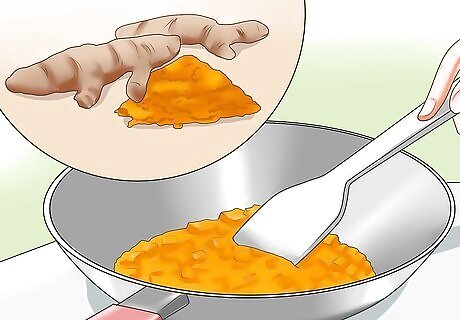
Use more anti-inflammatory spices. In particular, ginger and turmeric are believed to help reduce inflammation within the body and can thereby help lower CRP levels, too. Try cooking a meal that contains either seasoning at least once or twice a week. If you don't like the taste of either spice, you could take curcumin supplements. Curcumin is extracted from turmeric, and it's the component believed to be directly linked to turmeric's anti-inflammatory properties.

Eat dark chocolate. Moderate amounts of dark chocolate can lower CRP levels, but too much will still do more harm than good. Eat approximately 20 grams (0.71 oz) of dark chocolate twice a week for optimal results. When selecting the right type of chocolate, look for something that consists of at least 70 percent cocoa. Semi-sweet and milk chocolate do not provide the same benefit as intense dark chocolate does. Eating dark chocolate in small amounts like this can help reduce CRP levels by roughly 20 percent.
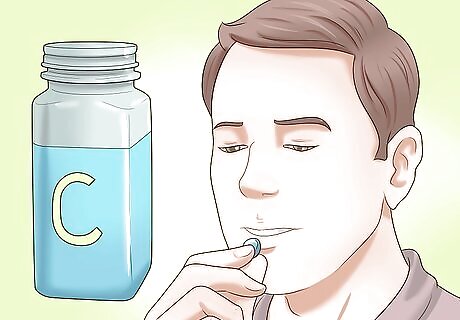
Supplement your diet with vitamins and other nutrients. Most of your nutrition should be satisfied by your actual diet, but if improvements to your diet still aren't enough, you can also help lower your CRP levels by taking the right dietary supplements. Vitamin C is one of the most beneficial options. Taking a daily dose of 1000 mg can help reduce your CRP levels by 25 percent. Taking 300 mg of krill oil each day for two weeks can cause CRP to drop by up to 30 percent. Similarly, taking two daily 1000 mg doses of standard fish oil capsules for up to six months can also lower CRP by comparable amounts. Other nutritional supplements that may help reduce your CRP include magnesium, vitamin D, and omega-7. Multivitamins that contain several beneficial vitamins and minerals can also benefit your heart.
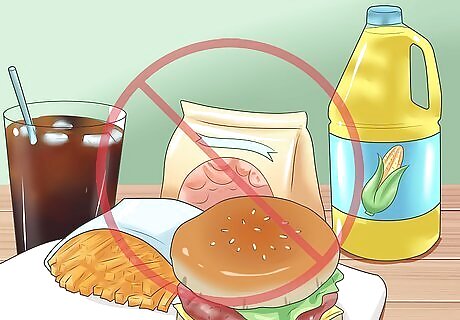
Avoid food products that increase inflammation. Refined foods and foods made with refined ingredients can be particularly damaging, so you should cut as many out of your diet as possible if you want to drop your CRP. Stay away from foods made with large amounts of refined flour and sugar. Similarly, you should also avoid refined vegetable oils like cottonseed, safflower, or corn oil. Hydrogenated fats should be completely cut from your diet. Drink less alcohol, too. Regular consumption of alcohol puts your body into a state of chronic inflammation, which can cause your CRP to dramatically increase.
Lifestyle Changes

Exercise regularly. Moderate amounts of moderate exercise can help lower inflammation and CRP levels. Additionally, it can help you lose weight, which can encourage your CRP to drop even further. Too much exercise can stress your heart and increase inflammation just as much as too little exercise, so you need to aim for moderation. Try to exercise at a steady pace for 30 to 45 minutes roughly five days each week. Options worth considering include brisk walking, cycling, and swimming.
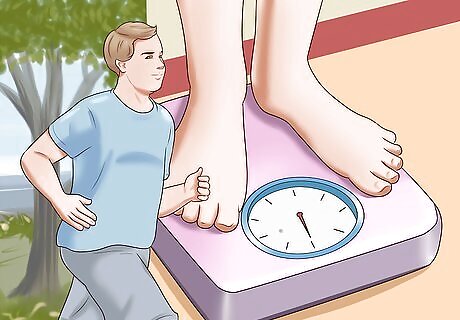
Lose weight. Being overweight or obese increases your risk of developing and maintaining elevated CRP levels. Large fat cells excrete more interleukin-6, an internal chemical that tells your liver to produce more CRP. While your overall weight is important, you should pay special attention to your waist size. Women with a waist measurement over 35 inches (89 cm) and men with a waist size over 40 inches (102 cm) are more likely to have elevated CRP levels.

Note that weight loss alone isn't enough. Even though losing weight is important, it's equally important that you lose weight in an appropriate manner. Some weight-loss diets can lower weight while actually raising CRP levels. Low-carbohydrate, high-fat diets (like Atkins) have a tendency to raise CRP levels. In fact, consistently maintaining such a diet for several months can cause CRP to increase by 25 percent. Diets that are low in unhealthy fats and high in complex carbohydrates are generally much better. When paired with regular moderate exercise, the benefits are even more pronounced.
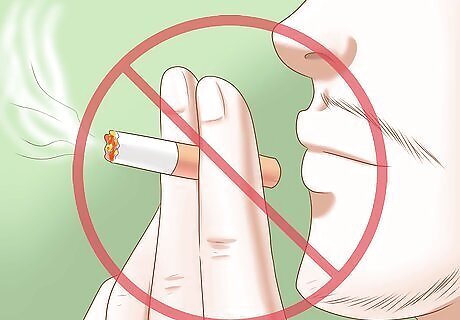
Quit smoking. Smoking causes the walls of your arteries to harden, which may increase inflammation and encourage your CRP levels to spike. Quit smoking as early as possible to improve your results. It can take up to ten years to reverse arterial damage caused by smoking, and the process can only begin after you quit.

Get enough sleep. Try to get between seven and eight hours of sleep each night. Getting less than six hours can increase inflammation. Additionally, getting too much sleep can also cause CRP to increase. People who regularly sleep for more than eight each night are more likely to experience increased inflammation than those who only sleep for seven to eight hours.

Relax. The presence of excess stress hormones can cause your body to release more inflammatory chemicals, which will usually cause CRP levels to rise. Finding time to relax can cause both your stress hormones and CRP to drop. If you find it difficult to switch to a more relaxing lifestyle, try to schedule at least 15 minutes of heavy relaxation time each day. Meditate, practice deep breathing, take a bubble bath, or listen to relaxing music. Nearly any activity that helps you unwind can help.
Medical Considerations
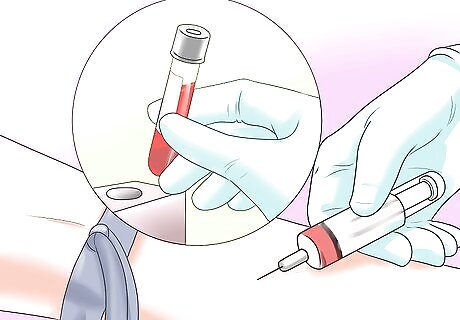
Check your numbers early. When possible, it's a good idea to check your CRP sometime in your early to mid 30s, especially if you have an elevated risk for heart disease. Your doctor can check your CRP with a blood test. Your numbers might be healthy while you're young, but by checking them early in your life, you'll get a baseline number that you and your doctor can use to help predict your future risk. For most adults, CRP levels lower than 1.0 mg/L indicate a low risk of heart disease. CRP between 1.0 and 3.0 mg/L indicate an average risk, and levels above 3.0 mg/L indicate a high risk.
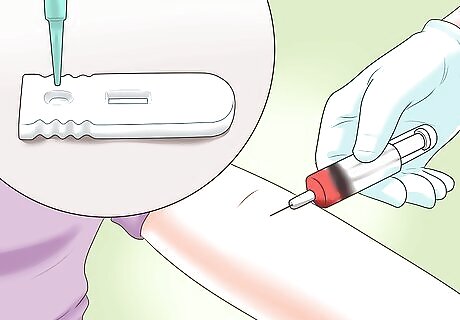
Keep checking your numbers. If you have an intermediate risk of heart disease, you should consult your doctor about regular CRP testing as you get older. Depending on your health and circumstances, it might be wise to test every five years or so. Note that there are two CRP blood tests. One shows non-specific CRP levels that occur with general internal inflammation, while the other shows highly sensitive CRP (hs-CRP) levels. The latter measures inflammation within your blood vessels, so this is the test you'll need if you want to determine your risk for heart disease. If you have arthritis, inflammatory bowel disease, or other autoimmune conditions, your doctor may need to give you an altered form of the CRP test since these conditions can raise your levels beyond the range used to assess cardiac health.
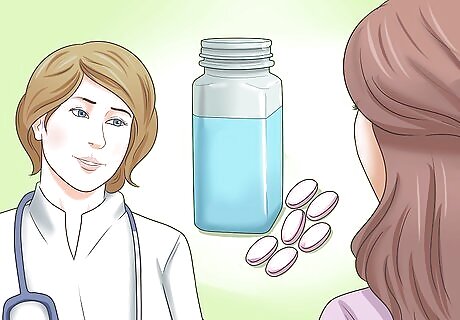
Talk to your doctor about statin drugs. When diet and lifestyle changes aren't enough to help drop your CRP levels, your doctor may recommend statin drugs. This is especially common for patients who also have elevated LDL cholesterol. Statin drugs have pros and cons, so you should carefully consider your options before opting for this form of medication. Some possible side effects include muscle pain, muscle damage, liver damage, digestive problems, rashes, increased blood sugar, and neurological effects.


















Comments
0 comment